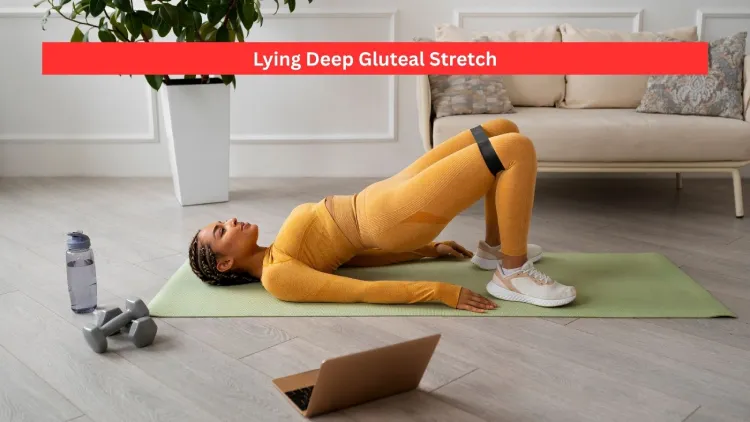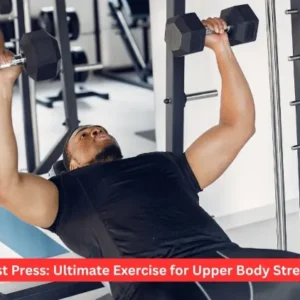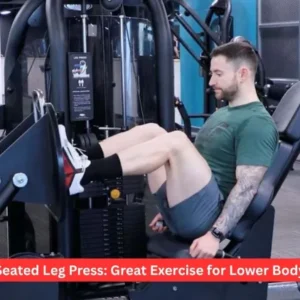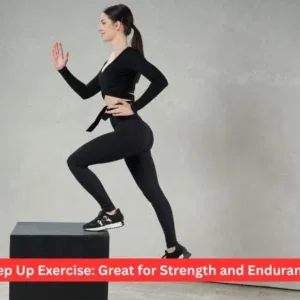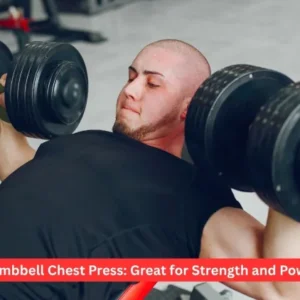Whether you have ever suffered tight hips, pain in the lower back or tension working its way through your glutes, you are not alone. They tend to be occasioned by long sitting, overuse in sports or lack of mobility. The Lying Deep Gluteal Stretch is one of the best and accessible means to target the issues. This basic but intense stretch helps you to loosen muscles, kill pain, and alleviate tension in the deepest part of the glute muscles, gluteus maximus, gluteus medius, as well as piriformis.
In this ultimate guide, we will sort through all there is to know about the Lying Deep Gluteal Stretch; its composition, mechanism and many more variables, such as relieving sciatic nerve pain, enhancing athletic performance, as well as addressing lower back pain due to posture irregularities.
You will receive a step-by-step guide on how you can do it safely, a few tips to make your stretch even better, mistakes many people make, and some of its variations that work with all mobility levels.
Regardless of what kind of person you are, whether an athlete, an office employee, or a simple person who wants to feel better and move comfortably, the stretch can become an essential part of your everyday wellness program. So, how and why can the Lying Deep Gluteal Stretch change the health of your lower half? Let us find out.

What Is the Lying Deep Gluteal Stretch?
Lying Deep Gluteal Stretch is a floor exercise that greatly targets the gluteal muscles, including the gluteus maximus, gluteus medius, gluteus minimus and the piriformis muscles. You can effectively isolate and lengthen the glutes by lying on your back with your knees bent, creating a figure-four position with your legs. It is commonly included in yoga, physical therapy and athlete warming-down stretches.
The Lying Deep Gluteal Stretch is achievable for most fitness individuals, and it can be useful in relieving pain caused by a compressed nerve or a tight muscle, and could be useful in increasing the range of exercising motion and learning to use the stretch to reduce the tension in the area.

Benefits of the Lying Deep Gluteal Stretch
The more you consist in training the Lying Deep Gluteal Stretch, the more your mobility, comfort, and muscular well-being have the chance of going through a change. Here’s how:
1. Releases Gluteal Muscle Tension
The problem of tight glutes is typical when a person spends much time sitting, performing rigorous exercise, or engaging in repetitive movement. The Lying Deep Gluteal Stretch will allow stretching these muscles and relieve tension in them, improving the circulation. This stretch may make the day-to-day routine more comfortable and provide a boost when performed regularly.
2. Alleviates Lower Back Pain
Your pelvis and spine are closely linked with the gluteal muscles. When these muscles contract, they may cause the pelvis to be tilted off centre and have a strained lower back. Lying Deep Gluteal Stretch can take away this tension and enhance a better spinal posture, which can alleviate lower back pain.
3. Improves Hip Mobility
The glues happen to stabilise and rotate the hip joint. Lack of flexibility will mean cutting short in the ordinary activities of daily life, such as bending, walking, and stair climbing, and will be accompanied by a painful process. The Lying Deep Gluteal Stretch increases the range of motion in the hips, resulting in smoother and more economical functional movement.
4. Eases Sciatica Symptoms
A tight piriformis muscle may squeeze the sciatic nerve, which creates pain running down the leg -piriformis syndrome or sciatica. Lying Deep Gluteal Stretch is a non-invasive, non-forceful method which may also help to unload the sciatic nerve and relieve the mild symptoms of sciatica.
5. Supports Athletic Performance
Both sprinters and cyclists, as well as lifters and dancers, depend on the robust and supple glutes to perform their best. The Lying Deep Gluteal Stretch maintains muscle tissues flexible so that one will not experience strain, recovery and hence more powerful and stable movement.
How to Do the Lying Deep Gluteal Stretch (Step-by-Step)
The Lying Deep Gluteal stretch utilises proper form as it is an important aspect of this stretch to prevent injury and therefore maximise its effectiveness.
Here we have a step-by-step procedure:
Step 1: Lying down
It should start with lying on your back on a yoga or cushioned mat. Bend each of the knees, keep feet contacting the floor, approximately, shoulder-width distances. Have your arms at your side.
Step 2: The Over-and-Over Method
The right foot should be lifted, and the outer edge of your right ankle should be positioned on your left thigh just above the knee. This will make your legs assume a figure-four pattern. Have the right knee fall away slightly.
Step 3: Pass Your Hands
Your right hand will go between your legs. Take your left hand around your left leg. Put your hands clasped behind the left thigh or shin, according to your flexibility.
Step 4: Breath and Pull
Exercise in slow movements and by drawing forward the left leg to your chest. You are supposed to know a strong stretch on your right glute and the side of your hip. Keep your head, shoulders and back on the ground. Ensure that this posture is held for 20 to 30 seconds with slow, deep breathing.
Step 5: Leaving and Changing
Slowly unclap your feet and unclench your leg muscles. Do the stretch in reverse to keep equal balance on your body.

Tips for Better Results
To maximise the value of the Lying Deep Gluteal Stretch, remember the following points:
- Stretch after warm up: Before stretching, it is recommended to warm up (e.g. by taking a 5-10min light walk or hip circles) to increase the circulation and make muscles less rigid.
- Shake and movements: Don’t lift the damaged area. Bouncing or jerking motions should never happen. Muscle strain can be brought about by sudden movements.
- Be in relaxation: Do not hold the position by tensing the shoulders, neck or jaw.
- Make adjustments: In case clasping behind the thigh will be too difficult, then a yoga strap or a towel can be used to ensure that there is bridging of the gap.
- Stretch both equally: This is in case when you feel one side is stiffer, stretch equally to encourage one-sided symmetry.
Common Mistakes to Avoid
Even stretches that are as easy as possible can still be done wrong when your attention is not concentrated. The following are the most typical mistakes which people commit with the Lying Deep Gluteal Stretch:
- Overstretching – There is a danger of strain when the glutes or the lower back are overstretched. Go into the stretch gently and pull out in case of sharp pain.
- Improper knee placement – Do not push hard on your raised knee. It should drop outward naturally as the joint is not strained.
- Elevation of the back or head- You need to keep the upper body relaxed and on the floor.
- Breath control – It is effective to hold your breath, no matter what stretch you are doing. Breathe out and in deeply in order to relax muscles.

Who Should Do This Stretch?
Lying Deep Gluteal Stretch can be done by almost all people, both beginners and advanced practitioners. It is particularly useful in:
- Office workers – Sitting at offices usually causes the tightness of the hip and glute muscles.
- Sportsmen and marathon runners – preventing injury as well as performance Enhancement.
- Yoga/pilates lovers – As a balanced flexibility exercise.
- People with mild pain in the sciatic nerve- Relief of compression of the nerve.
- Older adults –To increase the flexibility of the hip and decrease the risk of falls.
Be sure to consult a healthcare expert before making brand new stretches, particularly on the off chance that you have experienced past joint pain, hip replacements, or back medical procedure.
Variations and Modifications
The flexibility and physical limitations can make it hard to do a regular Lying Deep Gluteal Stretch; instead, do one of the following options:
- Glute Wall Stretch: Lie against a wall and put your foot against the wall rather than manually holding your leg. This gives support and control to the depth of stretch.
- Chair Seated Glute Stretch: It is recommended to sit on a sturdy chair and upright. Make your right ankle cross with the left thigh and slightly bend forward, and maintain your spine straight. This is perfect in the case of seniors or people with movement restrictions.
- Elevated Glute Stretch: Put your ankle up on something in a standing position, such as a bench, and fold forward at the hip to stretch the glutes without a lie down.
All the variations can be used in various ways as they hit the deep gluteal muscles all the same way.

Final Thoughts
When it comes to the Lying Deep Gluteal Stretch, this is one of the easiest and most effective assistants which can help you to increase hip mobility, release the tension in the buttocks and contribute to the maintenance of the normal spinal position. This is because this stretch does not need any special equipment, it can be performed practically anywhere, and has actual benefits regardless of whether or not you exercise, sit, or rehabilitate an injury.
When doing the Lying Deep Gluteal Stretch regularly, you will feel the difference in both the increased freedom of movement and the decreased discomfort in your lower back, hip, and leg will be decreased. It is just an easy investment in the future health of your musculoskeletal system. Therefore, put a mat, hold a long breath, and allow the stretch to work. Your Body will thank you.
Frequently Asked Questions
How many times will I benefit by doing the Lying Deep Gluteal Stretch?
The Lying Deep Gluteal Stretch is safe to perform every day, particularly when you sit frequently or run a vigorous exercise Program. To achieve the most effective outcomes, a set of 20-30 seconds of stretch and 2-3 repetitions on each side will do wonders. Practice makes one more flexible and gets rid of chronic tensions.
Will the Lying Deep Gluteal stretch be useful in case of sciatica pain?
Lying Deep Gluteal Stretch is usually prescribed to individuals with light sciatic nerve pain, though. This stretch isolates the piriformis muscle, which in turn, when tight, may compress the sciatic nerve; this will, in turn, decrease the compression of nerves and help to relieve symptoms such as pain, tingling or numbness down the leg.
What do I do when I try and experience pain when using the Lying Deep Gluteal Stretch?
When doing the Lying Deep Gluteal Stretch, you should quit when you experience sharp and intense pain. The stretch is supposed to generate a sense of slight to moderate tension, as opposed to pain. Exercise the muscle described by adjusting the position with a yoga strap or attempting a variation with the wall or a chair, to decrease the stress.
Is the Lying Deep Gluteal Stretch only recommended to beginners?
Absolutely. Lying Deep Gluteal Stretch is a beginner exercise which can be adjusted to any level of fitness. It is a low-intensity and non-exerting technique of flexing the hip and enhancing glute mobility. So just remember to heed the proper form and not over-pull the leg in order to avoid any injury.

